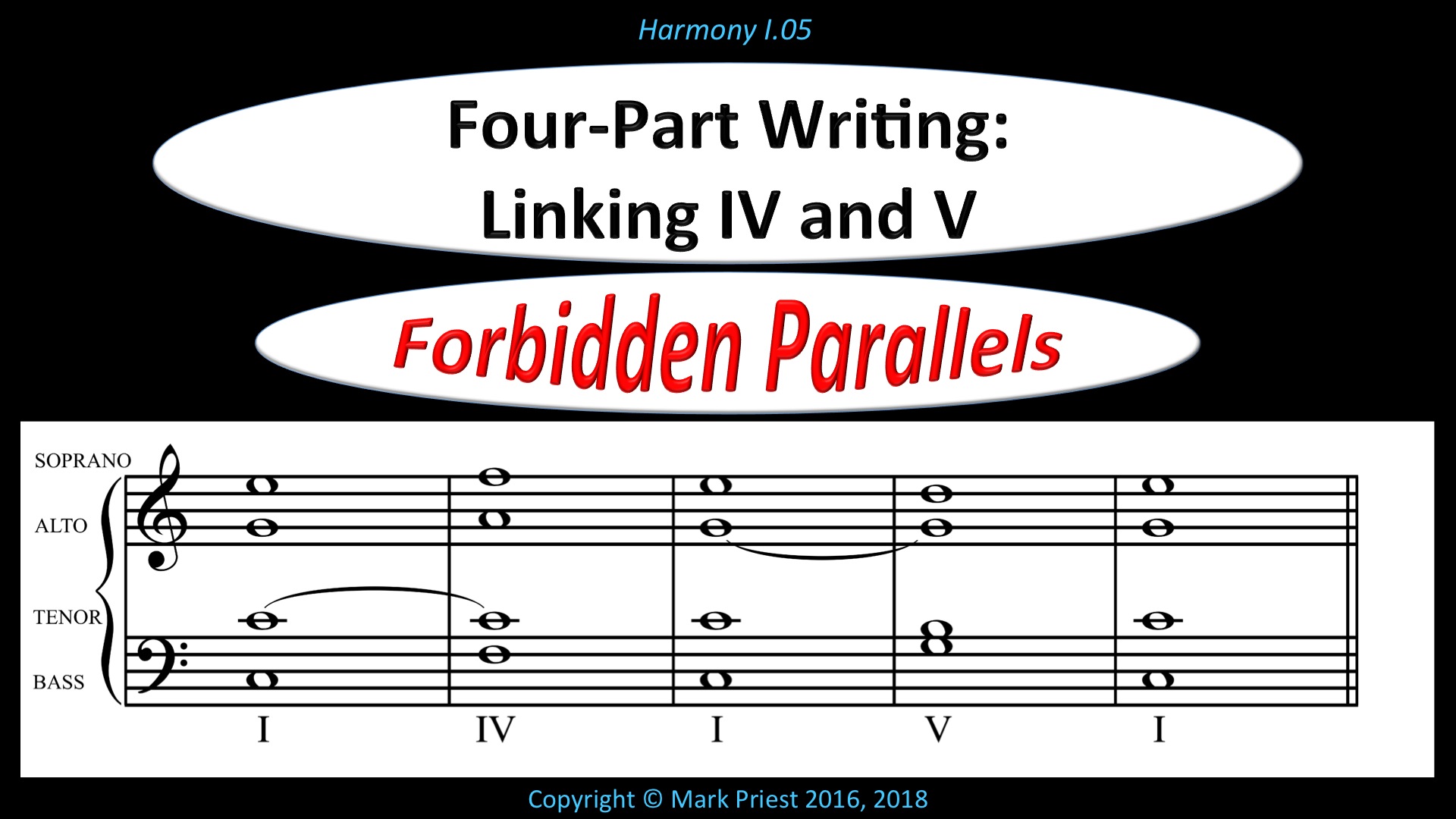
Notice the Roman numerals at the bottom of the staff. The “harmonic coding” pictured here, when sung by a four-voice choir [SATB], would sound something like this: [audio]
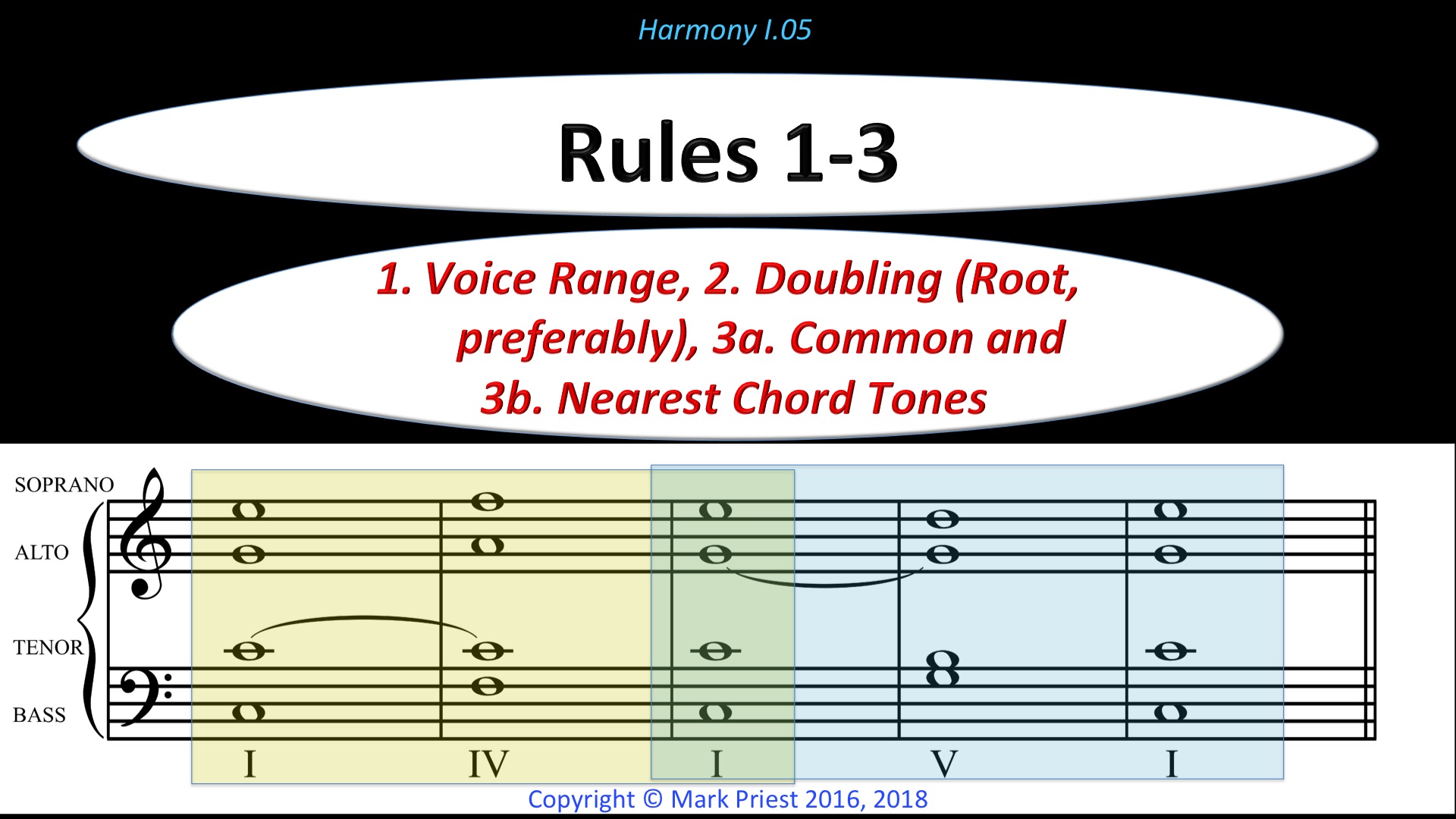
Highlighted in yellow is the result of following the Rules for linking the Tonic and Subdominant triads, in four-parts [audio: I-IV-I], and in blue for linking the Tonic and Dominant triads. [audio: I-V-I].

Placed side by side, we observe there are *no common tones*, no shared connections, between the **Subdominant** and **Dominant** triads. So, what do we do now?
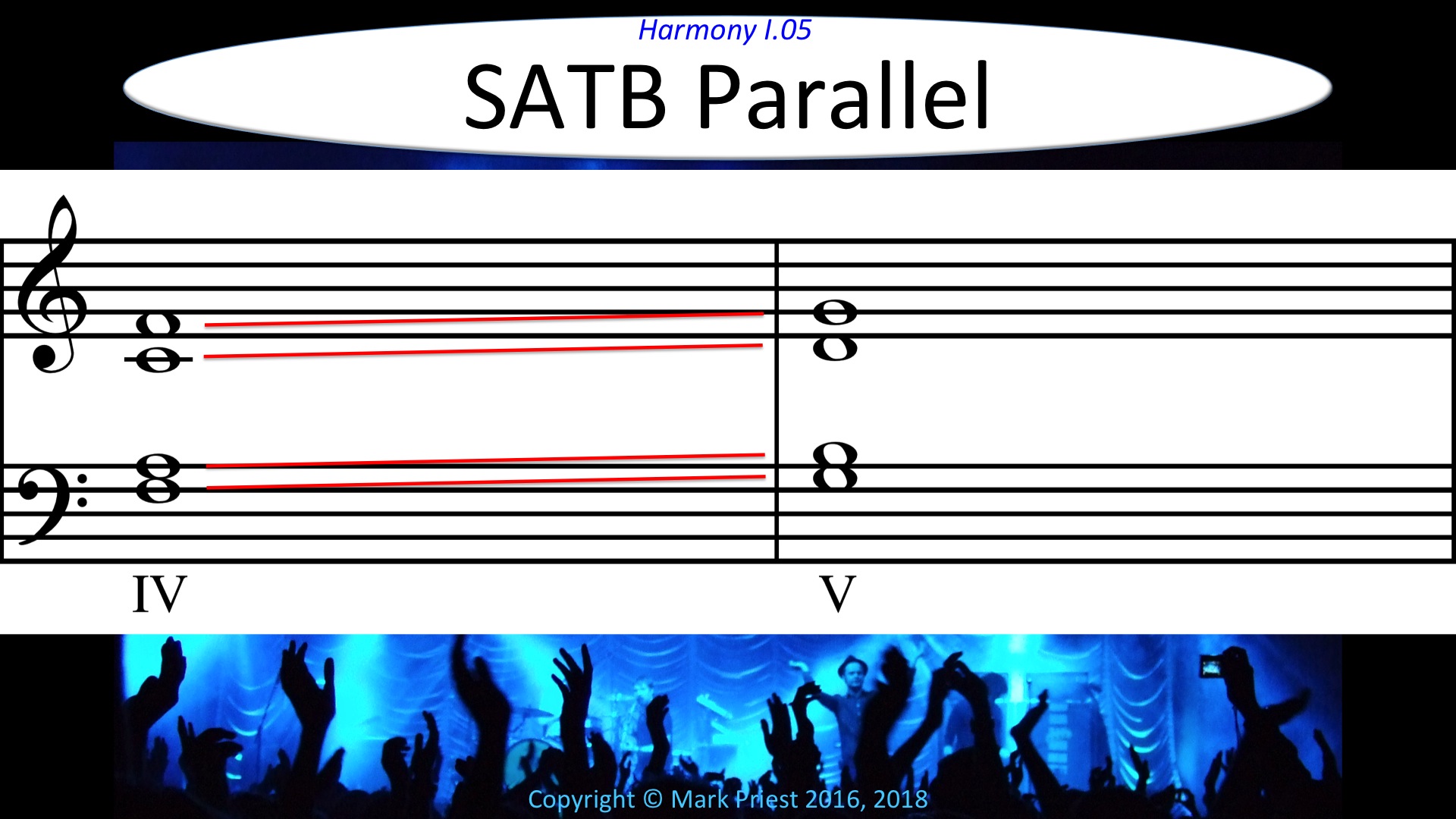
Well, we could try moving all four voices in parallel, like this: [audio] Popular culture today tends to favor such parallel movement of parts, owing to its emphasis on the guitar and certain electronic harmonizer devices.
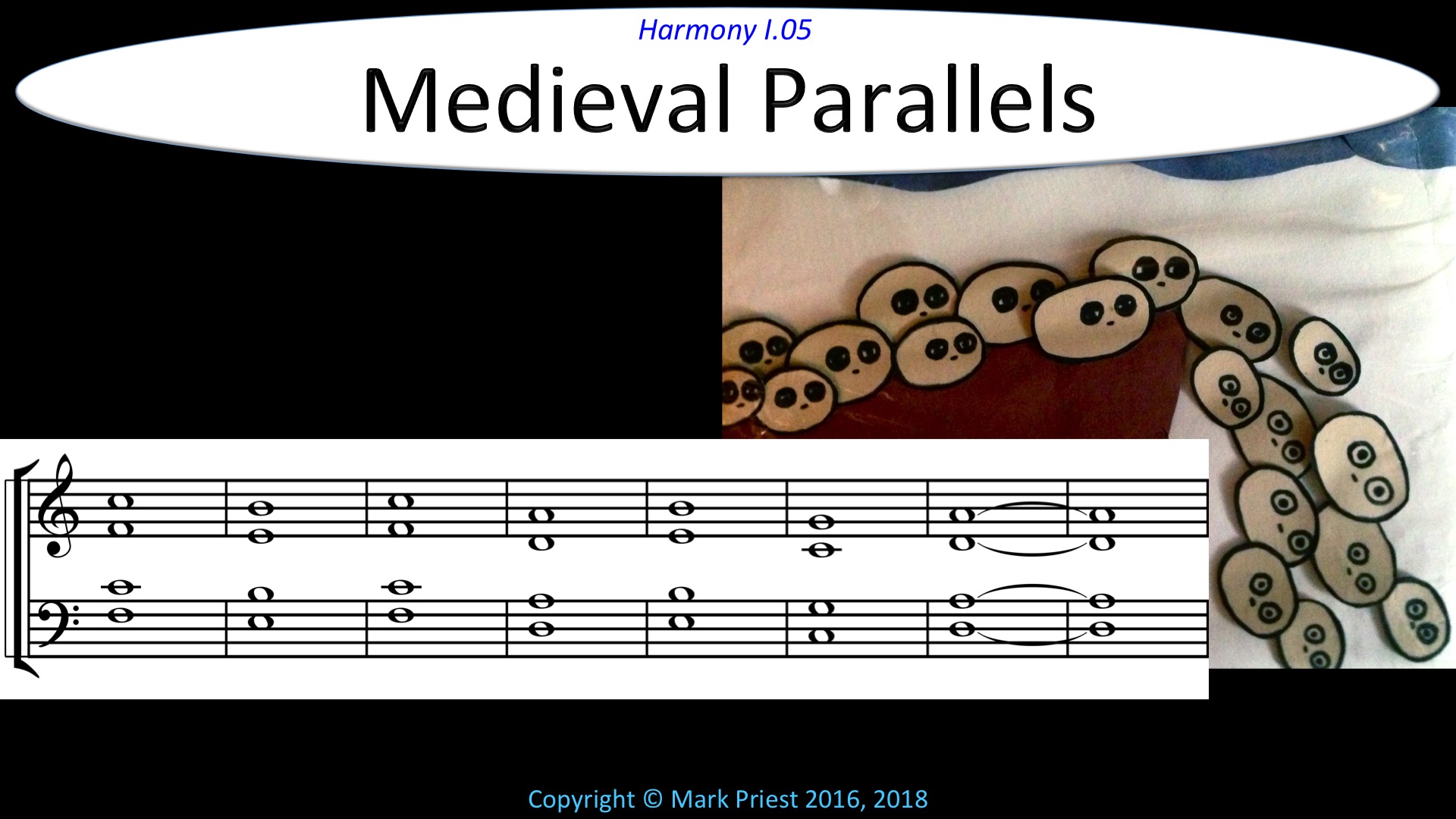
On the other hand, Medieval Church music also featured parallel voicings, which sound something like this: [audio] Yes, they used “Power chords” way back then!
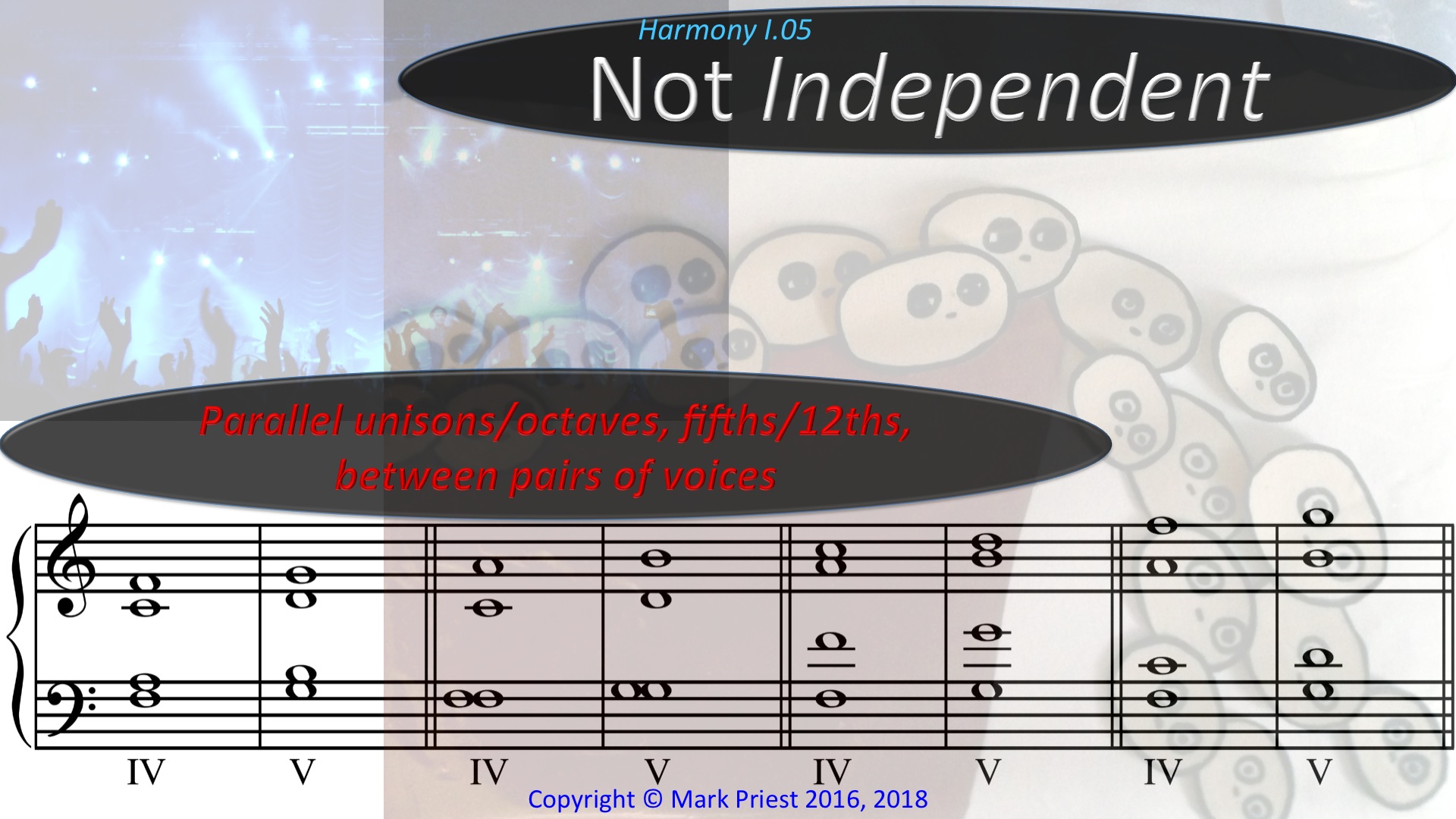
When voices move in parallel unisons [octaves], or fifths [12ths], they are moving *en masse*, no longer independently. [audio] There is no individual voice leading, and no counterpoint happening between voices.

Independent writing in four parts requires the ability to think on multiple-dimensions – and plan ahead – but the result is worth the effort. You are adding an awesome skill to your talent set! Let us return now to the Subdominant-Dominant [IV-V] connection. ...

These voices move completely in parallel, from the IV to the V chord. [audio] In *pure four-part writing*, we **MUST AVOID parallel unisons, fifths, octaves, and 12ths.** We save such parallels for when we consciously want to evoke that near-medieval sound.
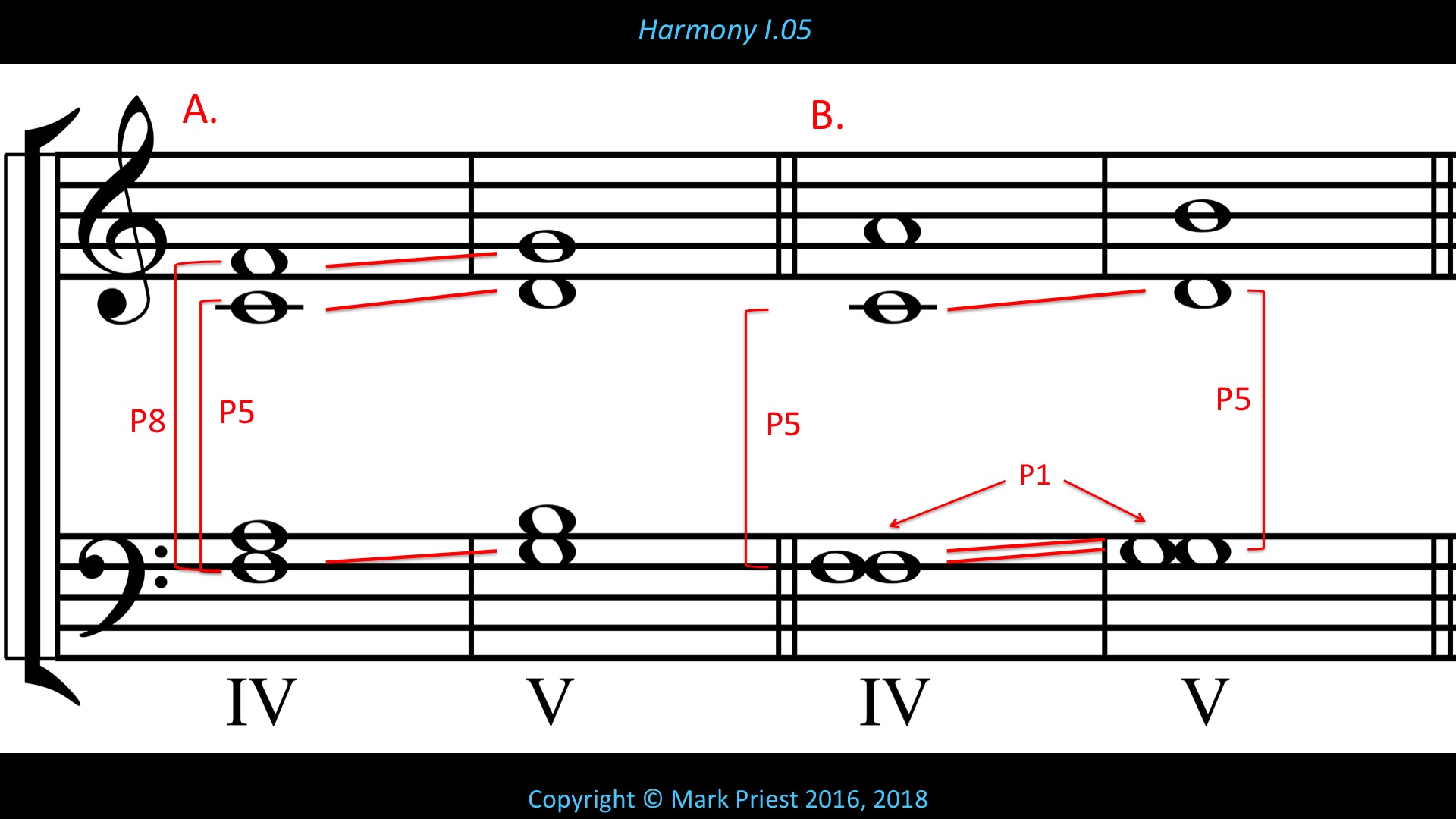
What is happening here? At A, Bass and Soprano move in parallel octaves, Alto in parallel fifths with Bass [audio]. At B, Bass and Tenor move in unison, F to G [FA to SOL], while Alto moves in parallel fifths with them [audio]. The third of each chord is left out in the audio, so you can better hear the parallel octaves and 5ths.[audio]
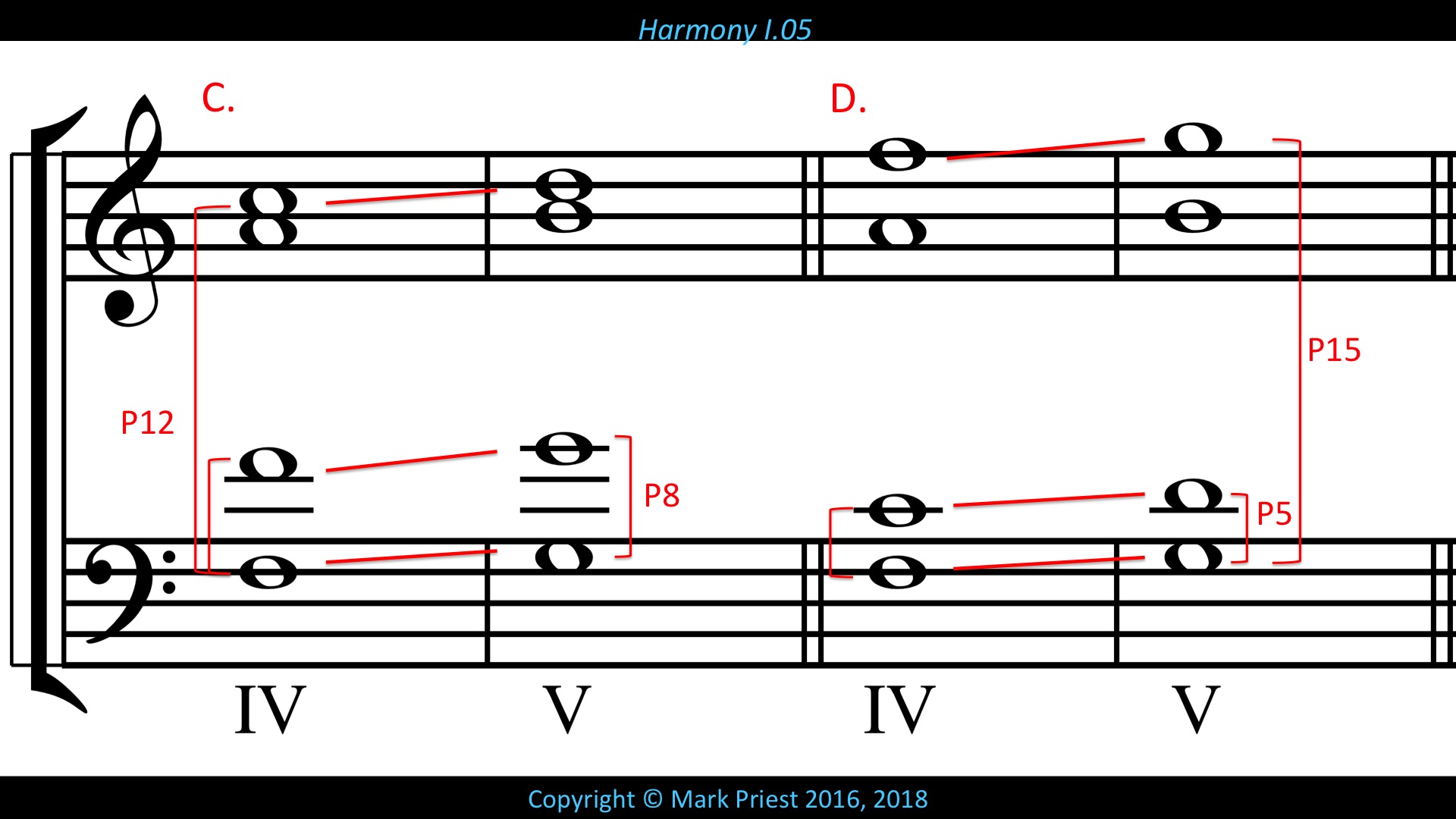
And here? At C, Bass and Tenor move in parallel octaves, with Soprano in parallel 5ths (12ths) with both. [audio]. At D, Bass and Soprano are in parallel double-octaves, and Tenor in parallel fifths with Bass [audio]. How can we avoid these faults?
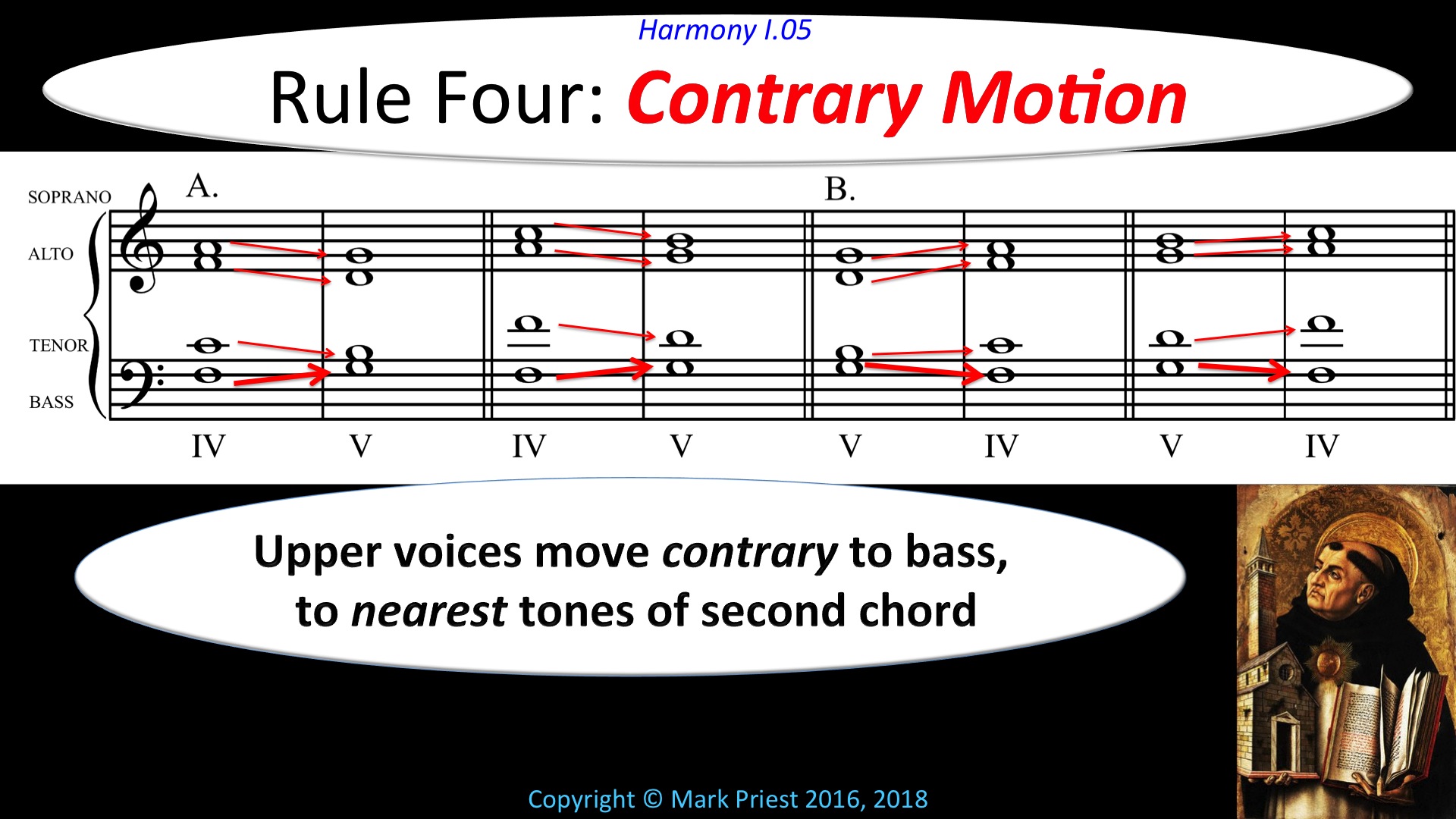
**Rule Four!** When moving between Subdominant and Dominant chords, we must lead the upper voices to the **nearest tones** of the next chord, in ***contrary motion*** to the Bass movement. [audio] Voila ! No more parallel octaves or fifths!
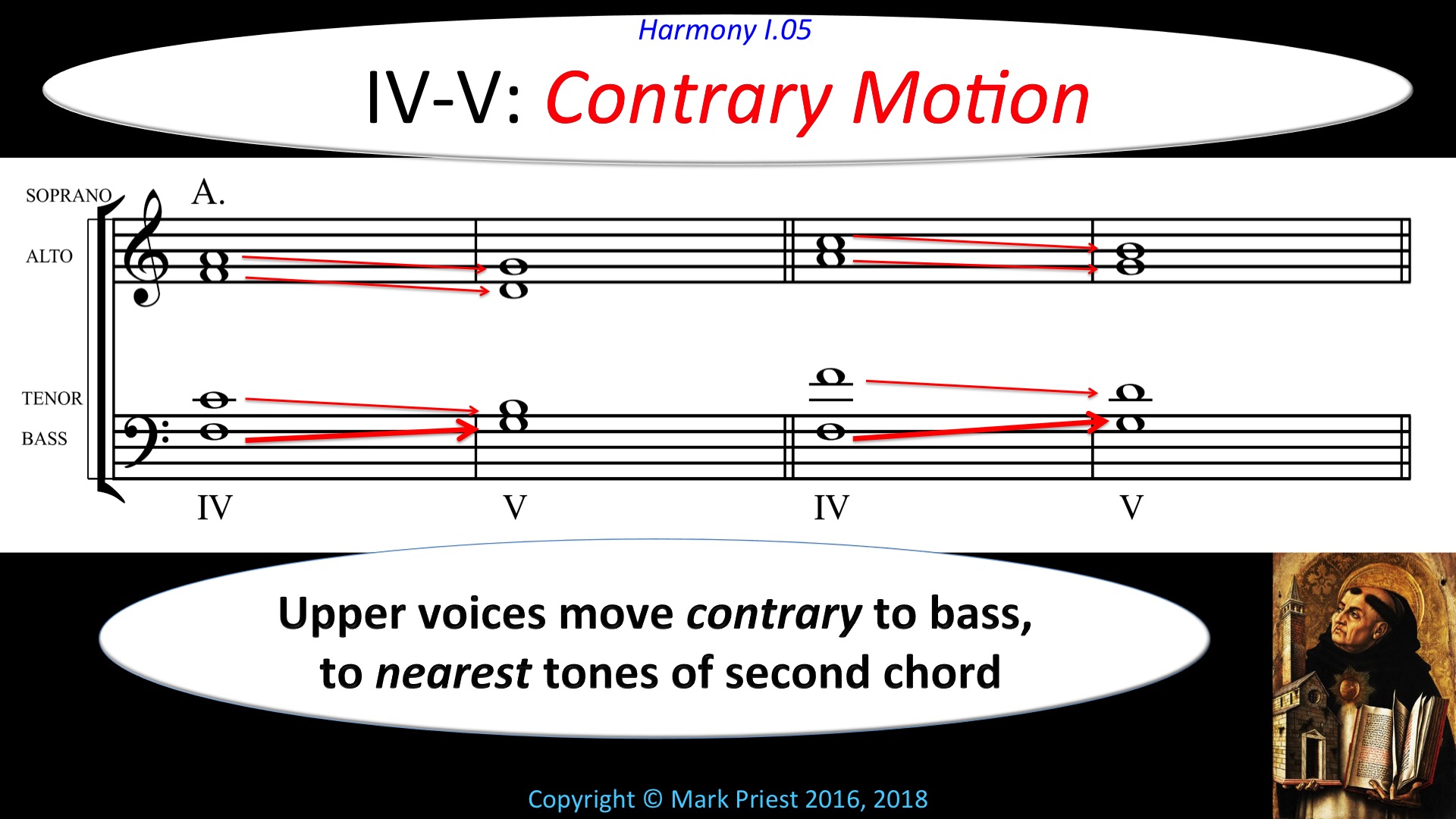
In the four-part choir [SATB], moving in *contrary motion* from Subdominant [IV] to Dominant [V] sounds something like this.[audio] Smooth.
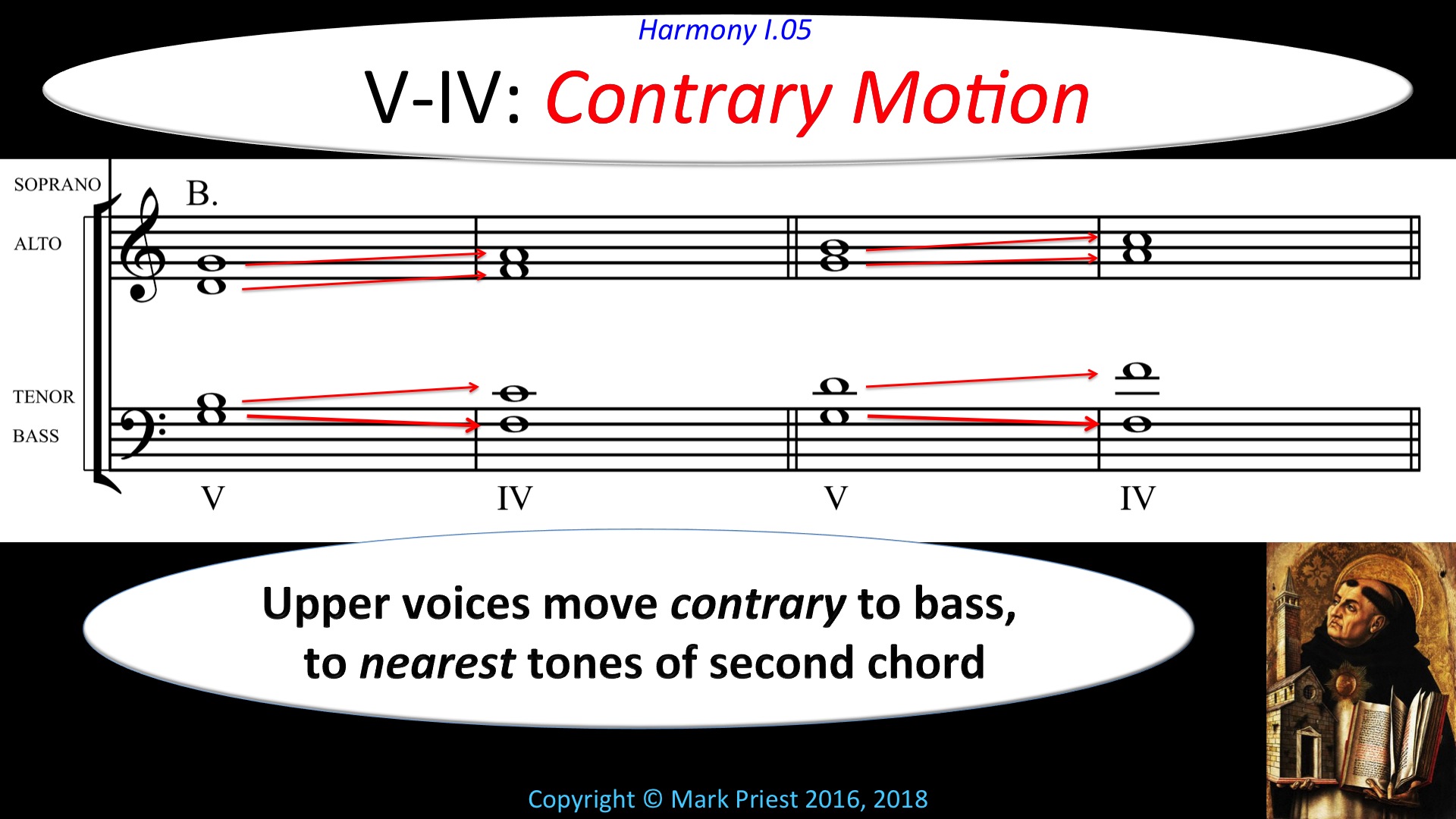
The reverse is also possible: Dominant [V] to Subdominant [IV]. [audio] *Contrary motion* between the bass and upper voices, the latter moving to the nearest tones of the next chord.
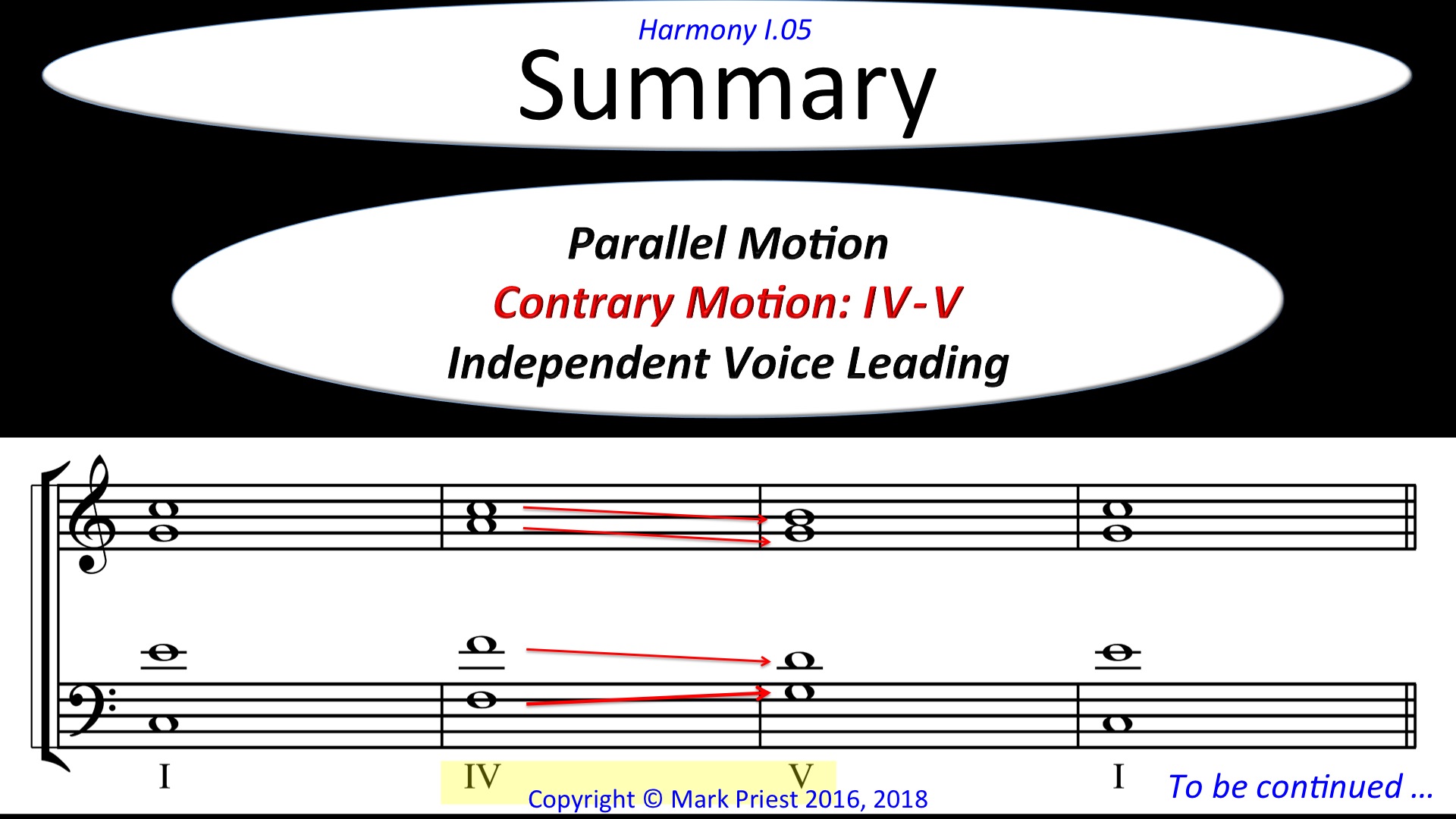
Thus we introduced the concepts of parallel motion, and contrary motion, and how the latter may be used to maintain *independent* voice leading between Subdominant and Dominant chords [IV-V]. [audio] A follow-up talk expands on these concepts. But in order to know about this ...

Subscribe to the *[DTube]* channel for the update. **[Follow, Share, Upvote, Resteem!]** Do lots of listening, go through the channel Playlists, and Share the link!
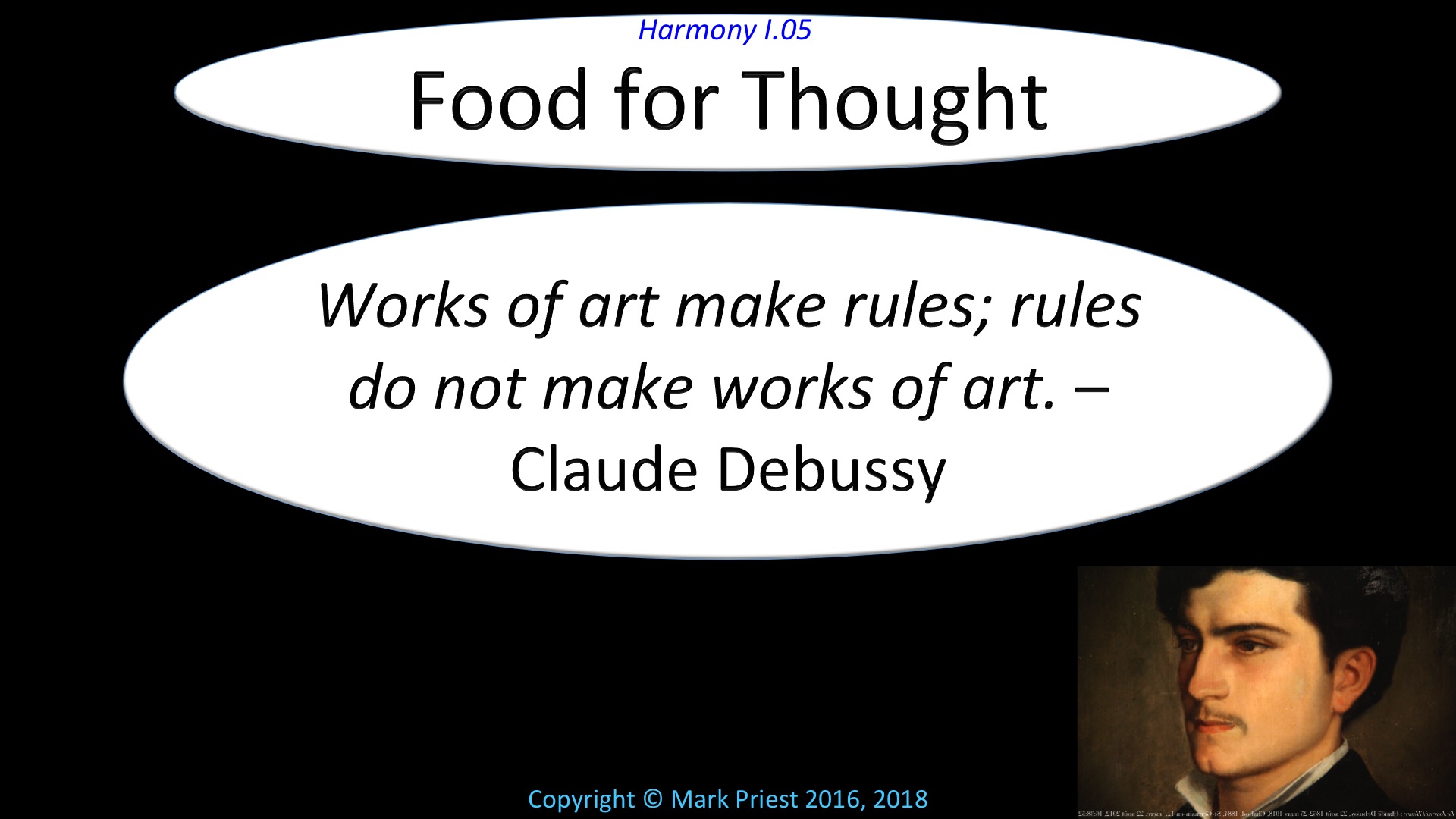
Food for thought.
NOTE: DTube video incorporating the audio to follow soon!
[Edit:] Link to video: https://steemit.com/music/@monadnock/i1sr9jk8
PLAYLISTS
*Elements of Music* Playlist: https://www.youtube.com/playlist?list=PLr9RYCj11MSycDV5jr07-Sl60ymZyadET
*Music Fundamentals* Playlist: https://www.youtube.com/playlist?list=PLr9RYCj11MSxs91JeTfDvKtilJnOWw6JP
*Harmony in Music I* Playlist: https://www.youtube.com/playlist?list=PLr9RYCj11MSwV82yI5x6SbNxmG9CMhfOv
*Piano Beginnings* Playlist: https://www.youtube.com/playlist?list=PLr9RYCj11MSxPncb7aKgf90hnckKuiEhb
IMAGE CREDITS
Audience at Rock Concert, by marfis75 on flickr: https://flic.kr/p/5Z9g8a
Lemmings, by Tao Lin on flickr: https://flic.kr/p/easHSE
Thomas Aquinas, by Rafael Robles on flickr: https://flic.kr/p/8fs7XV
Rodin’s sculpture, The Thinker: https://openclipart.org/detail/224299/the-thinker
Sheep, by Dan Phiffer: https://flic.kr/p/6hteyd
Claude Debussy, by Renaud Camus on flickr: https://flic.kr/p/cWLDzu
Creative Commons License: https://creativecommons.org/licenses/by-sa/2.0/legalcode
Public Domain Mark: https://creativecommons.org/publicdomain/mark/1.0/
USEFUL REFERENCE
Jadassohn, Dr. Salomon. *Manual of Harmony*, translated from the German by Paul Torek. Breitkopf and Hartel, 1890. A Public Domain work.
Audio: “Dies Irae.” Parallel organum based on oft-quoted cantus firmus, a [Gregorian] plainchant melody, dating from 12th-13th century. Public Domain.
 hiveblocks
hiveblocks